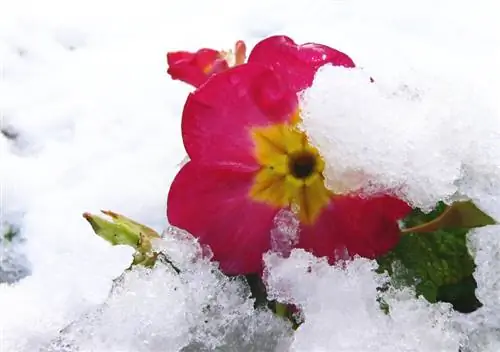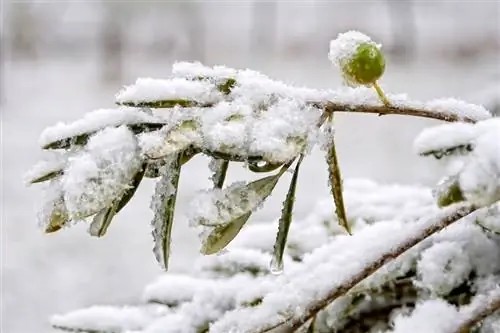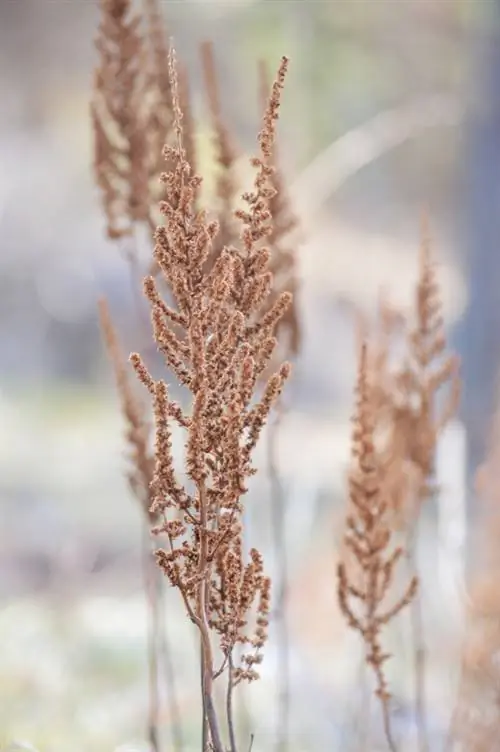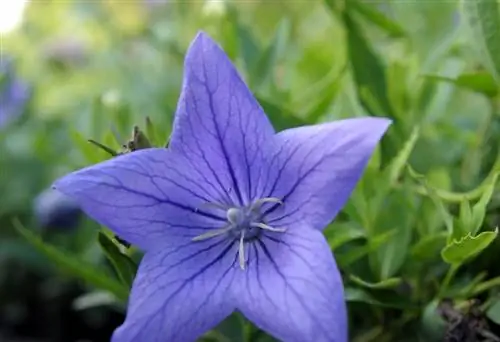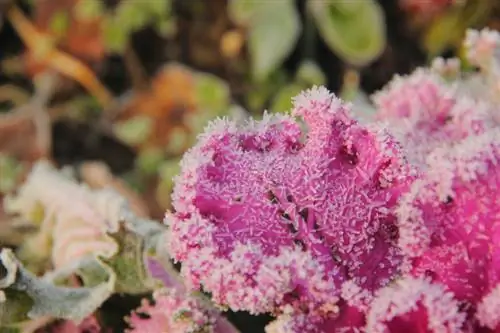- Author admin [email protected].
- Public 2023-12-16 16:46.
- Last modified 2025-01-23 11:20.
Primroses are the first flowers in spring, along with daffodils, crocuses and snowdrops. With their brightly colored flowers they bring color into the dreary landscape. Some even bloom when the temperature is around freezing point. Does this automatically mean that all primroses are frost hardy?
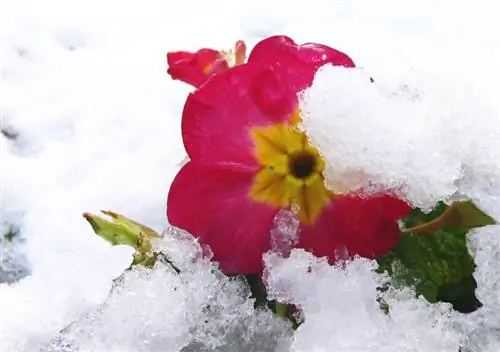
Are primroses frost hardy?
Answer: Most primrose species are hardy and can tolerate frost. To protect primroses from severe frost, they can be covered with brushwood, leaves, moss, spruce branches or bark mulch. Primroses should be stored in pots in a frost-free, cool place at temperatures below -5 °C.
Most species tolerate frost
Most primrose species that are available in pots in hardware stores, supermarkets and garden centers in this country are hardy. With the right amount of care, they can live for many years and bloom happily every spring.
But some species, such as the well-known cup primrose, are less able to tolerate freezing temperatures and are not frost-proof. It is advisable to place them indoors to protect them from frost or to cover them with an insulating layer. The equally well-known cushion primroses and cowslips are hardy in this country.
Protect primroses from severe frost
Primroses that you have already planted in the garden should be protected if a harsh winter is predicted. If temperatures fall below -5 °C in the long term, you should have protective materials ready. You can protect your primroses with the following materials, for example:
- brushwood
- Leaves
- Moss
- Spruce branches
- Bark mulch
Alternatively, you can dig up the primroses, put them in a pot or a basket and overwinter at home or in the gazebo. It is important that the wintering location is frost-free but cool. The temperatures should be between 3 and 10 °C. When overwintering, make sure not to fertilize the primroses, but to water them moderately and regularly.
Protecting primroses in the pot from frost
If the primroses in the pot are on the balcony or terrace, for example, they should be given increased attention in winter. The pot could freeze and the plant could die. In addition, if the temperature is a few degrees below 0, the flowers could freeze. Therefore, it is best to wrap these primroses with newspaper and cover them when temperatures drop below 0°C.
If it gets colder than -5 °C, the primroses should be put in the pot. But they shouldn't come into the warm living room. A frost-free but cool place such as the basement or the stairwell is better.
Do not plant primroses when there is frost
Although most primroses can tolerate frost, they should never be planted on a frosty day. Frozen ground makes planting much more difficult and the roots of the primroses could freeze. Planting is better from 5 °C.
Primroses that you receive in the garden center in January/February should also not be planted outdoors immediately. It is better to put them indoors first and plant them out from March or slowly get them used to the cooler temperatures outside.
Tips & Tricks
A location close to the house protects the primroses from strong weather influences. In addition, houses radiate a certain warmth from the inside, which is good for primroses in frost.

